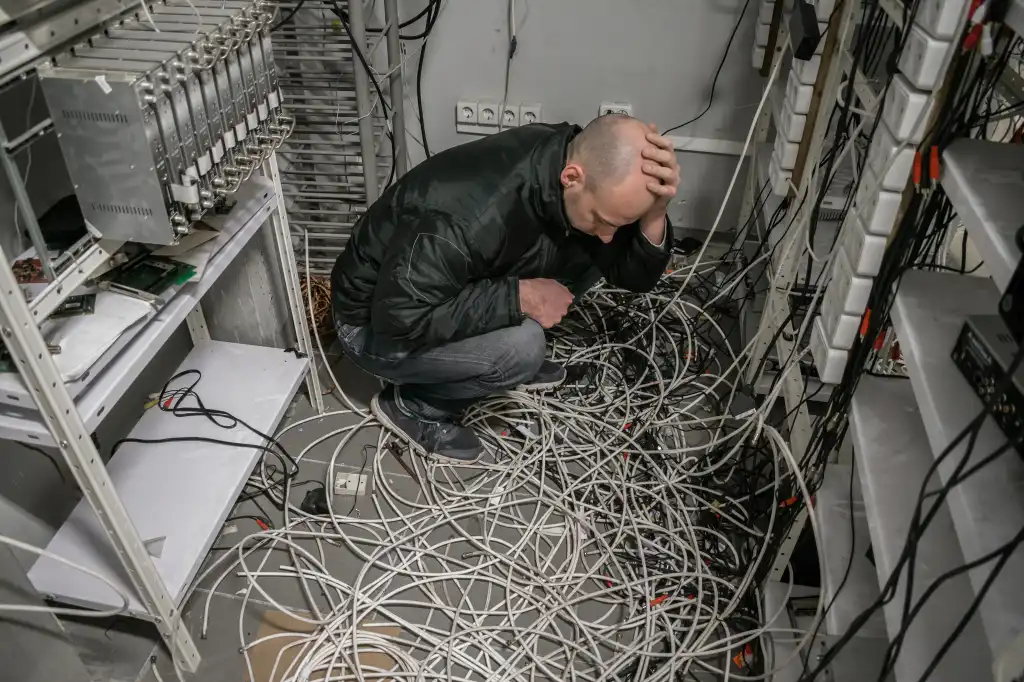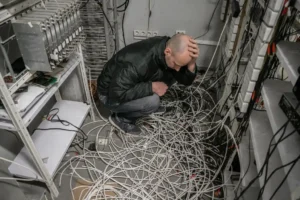Introduction
Outdated IT infrastructure can quietly slow down your business. Many companies rely on old systems because they seem to “still work.” But as your business grows, so do your technology needs. Holding onto legacy systems can lead to lost productivity, increased costs, and serious security risks.
Modern businesses depend on fast, secure, and flexible IT environments. Whether you’re running a small company or managing a large operation, your infrastructure affects every part of your business—from how quickly your team can respond to clients to how well your data is protected. This article explores the key reasons why outdated IT infrastructure is a liability and shows you how to fix it.
1. Slower Operations and Reduced Productivity
Old Systems Can’t Keep Up
Older hardware and software often run more slowly. As programs and apps get updated, they demand more from your systems. Old servers, computers, and networks struggle to keep pace, which leads to:
- Slow loading times
- Frequent crashes
- Downtime that affects work
Impact on Your Team
Employees spend more time waiting and less time doing. Over time, this cuts into productivity and affects morale. Tasks that should take minutes can take hours.
Real-World Example
A local logistics firm used 10-year-old desktops and a legacy ERP system. Updating customer orders took longer each month. After upgrading to modern systems, processing time improved by 50%.
2. Increased Security Risks
Legacy Systems Are Easy Targets
Cybercriminals look for weak links. Old systems often lack the latest security patches. This makes them easy to exploit. Unsupported software is especially risky because vendors stop fixing vulnerabilities.
Data Breaches Are Expensive
A breach can cost thousands—or even millions—of rands. Risks include:
- Customer data theft
- Ransomware attacks
- Business disruption
Compliance Concerns
Industries like finance, healthcare, and retail face strict rules. Outdated IT may not meet current compliance standards. This can lead to penalties and damage to your reputation.
3. Higher Maintenance and Support Costs
Old Tech Needs More Repairs
Older hardware breaks down more often. Parts are harder to find. Support may require specialized technicians, driving up your IT costs.
Software Compatibility Issues
New apps may not run on old operating systems. Your team may waste time finding workarounds, or worse, using unsupported versions that pose risks.
Opportunity Cost
While you’re fixing old systems, your competitors are moving forward with automation and cloud computing. This puts you behind in the market.
4. Poor Customer Experience
Slow Response Times
If your systems lag, so do your service teams. Clients may face delays in responses, slower transactions, or poor online experiences.
Outdated Communication Tools
Clients expect fast and flexible ways to interact—live chat, online portals, instant document access. Legacy systems limit your ability to deliver modern service.
Brand Perception
Clients judge your business by their experience. If your tech feels old, they may think your services are outdated too.
5. Limited Scalability and Innovation
Hard to Grow with Old Systems
As your business grows, so should your technology. Outdated infrastructure often lacks the flexibility to scale. You may face limits on:
- Data storage
- User access
- Application integrations
Innovation Becomes Difficult
You can’t adopt new tools or processes if your systems won’t support them. This blocks innovation and keeps you stuck.
Example
An e-commerce business wanted to use AI tools to analyze customer behavior. Their server couldn’t handle the load. After switching to a cloud-based solution, they launched the tool in a week.
How to Fix It
1. Conduct a Full IT Audit
List all hardware, software, and tools. Identify:
- What’s outdated
- What’s no longer supported
- What’s slowing down operations
2. Prioritize Key Areas
Start with systems that impact daily work the most—email servers, customer databases, or internal networks.
3. Plan Gradual Upgrades
You don’t have to replace everything at once. Work with your IT partner to phase upgrades over time.
- Upgrade network infrastructure
- Move to cloud-based tools
- Replace outdated desktops and servers
4. Improve Security Standards
Make cybersecurity part of every upgrade. Use:
- Updated antivirus and firewall systems
- Multi-factor authentication (MFA)
- Automated patch management
5. Partner With an IT Expert Like Nectic
Nectic helps businesses transition to modern infrastructure without disruption. We offer:
- System audits and planning
- Cloud migration
- Security upgrades
- Ongoing support and monitoring
Conclusion
Holding onto outdated IT systems may seem like a cost-saving decision, but it often does more harm than good. From slower operations to security risks, legacy infrastructure holds your business back.
Upgrading your systems is not just about keeping up with technology—it’s about staying competitive, protecting your data, and supporting your team. Start small, prioritize your needs, and work with a trusted IT partner like Nectic to move forward with confidence.






